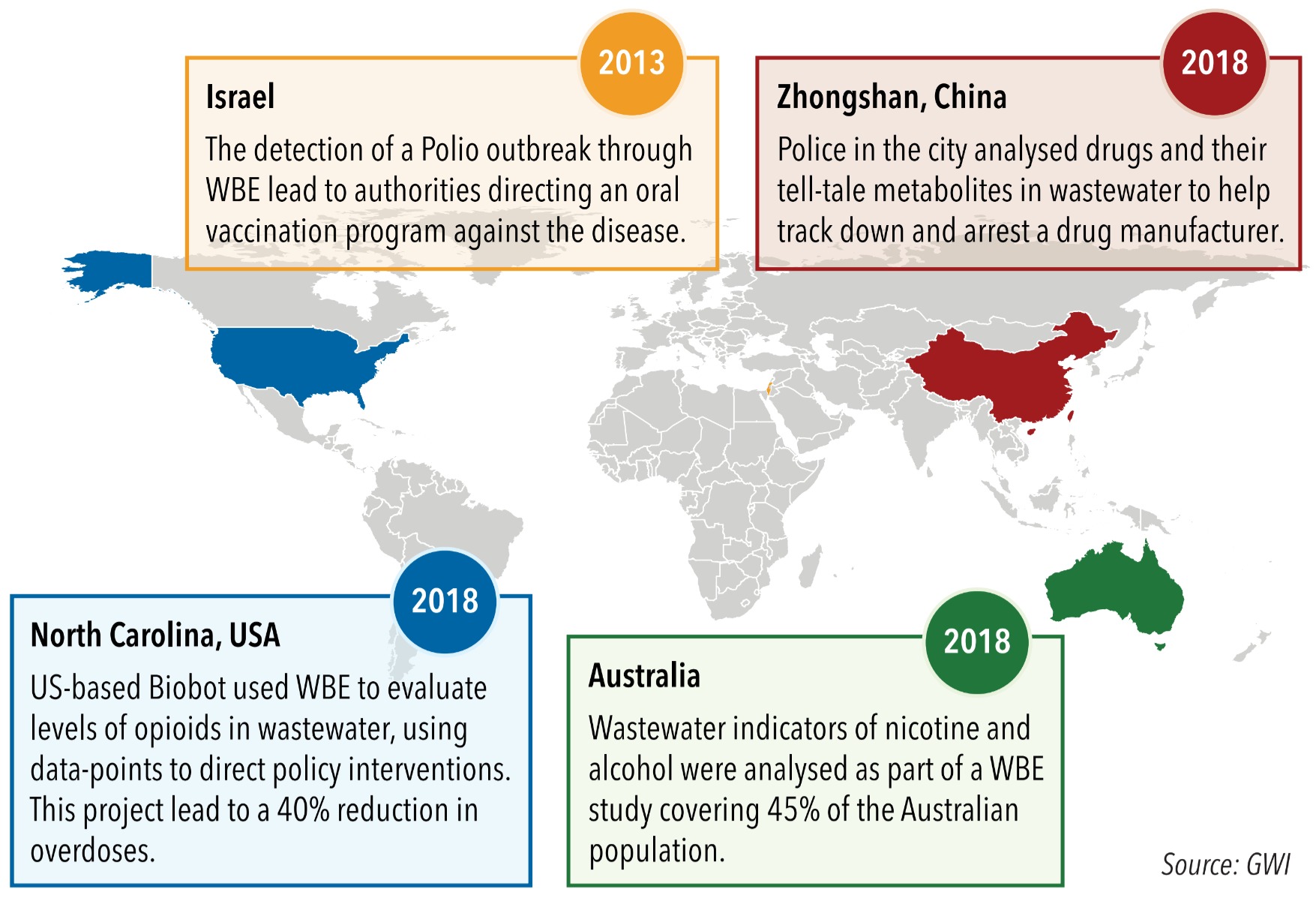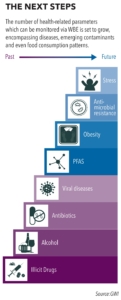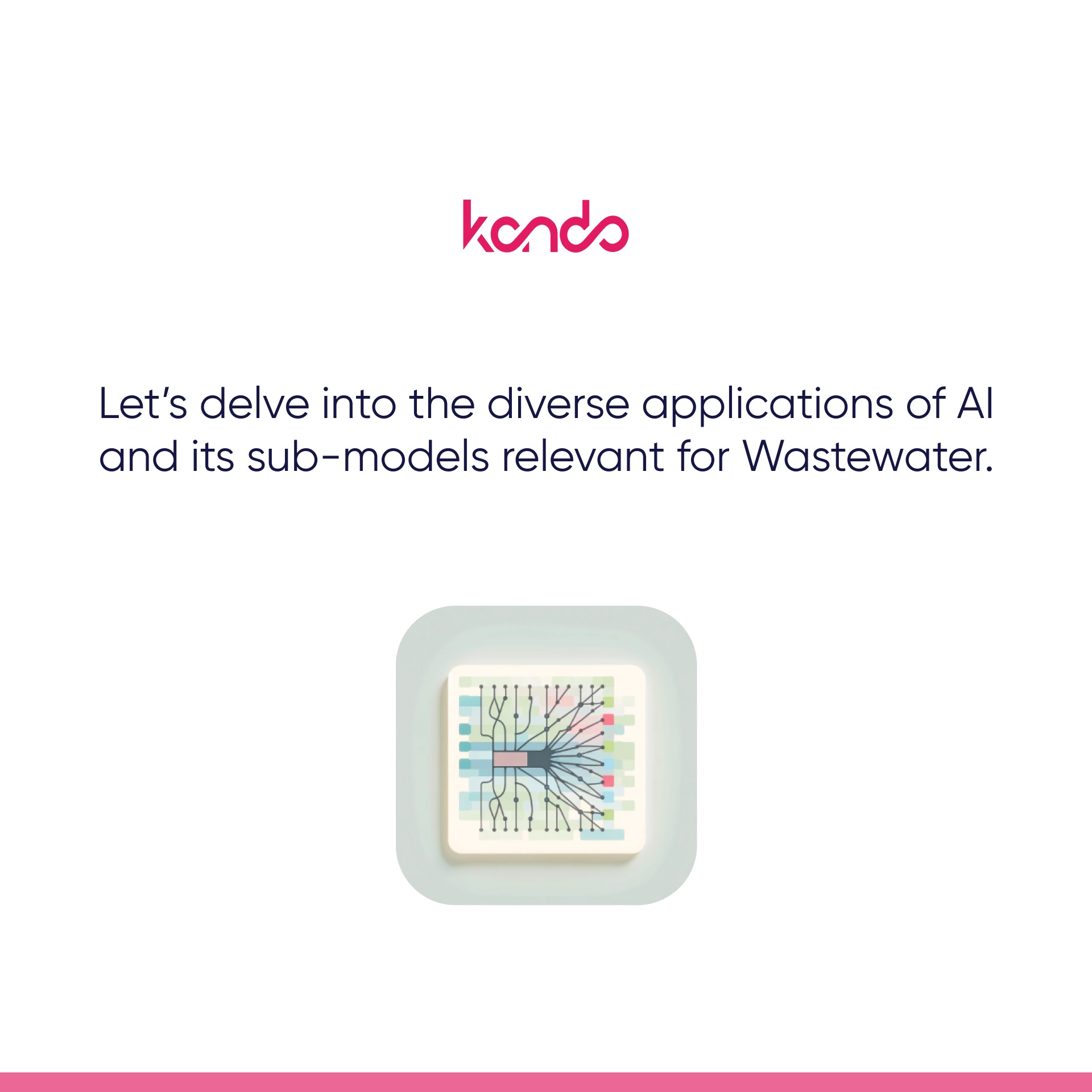
Admin
March 2, 2022
Could sewage surveillance become key in monitoring public health?


Wastewater-based epidemiology has become a vital tool in monitoring the spread of infectious COVID-19 variants. Successful projects have also opened avenues for squeezing more health-related data-points from sewage.
Approved republication from: https://www.globalwaterintel.com/
As demand for COVID-19 testing capacity heightens with the onset of increasingly infectious variants, sewage has sprung to the fore as a way to uncover new indicators of community transmission. This method, known as wastewater-based epidemiology (WBE), holds a unique value proposition: because everyone uses the toilet, every individual releases great quantities of health-related data into sewer systems and, eventually, wastewater treatment facilities.
Samples of waste collected from these locations can yield key insights into the prevalence of COVID-19 across a catchment area, with PCR analysis indicating community infection rates. This can be bolstered by advanced gene sequencing techniques, which can be used to indicate the presence of new variants from wastewater samples.
This technology is nothing new. In 2013, scientists in Israel identified an outbreak of polio through the epidemiological surveillance of sewage systems, using data-points to direct an oral polio vaccination program. However, during the COVID-19 pandemic, WBE has seen a rapid rise in use-cases, with both commercial vendors and public agencies turning to sewage for new indicators of community transmission.
Harnessing the power of waste
A growth in applications of WBE during the COVID-19 pandemic can be attributed to its advantages over physical testing programmes. “Whereas clinical data only includes those who have access to health services, organic, wastewater-based data includes everyone who uses the toilet,” said Mariana Matus, CEO of Boston-based Biobot Analytics, one of the early pioneers of COVID-19 wastewater monitoring. This is especially key in regions where private healthcare models exclude many from accessing clinical services. Furthermore, speed of diagnosis remains a key advantage of WBE, with people shedding viral load in stools prior to exhibiting symptoms. “It’s like you have a glimpse into the future that helps authorities understand where to allocate new PCR tests, which hospitals to prioritise, and where to direct vaccination efforts,” observed Zohar Scheinin, co-founder of wastewater intelligence specialist Kando, an early developer of smart WBE support systems.
Experience to Build On
While the use of wastewater-based epidemiology to track COVID-19 transmission has prompted a recent surge of interest, the monitoring method has successfully traced various drugs and diseases across a number of locations over the last decade.

Source GWI
WBE approaches to assessing viral transmission have proven effective at varying scales, with targeted sampling points being key to leveraging relevant insights. “To quickly get population coverage the treatment facility is the best approach,” Matus explained. At the plant, a 24-hour composite sample is taken; in many ways the gold standard of WBE. “Every person in a catchment will be using a restroom at least once during this time,” she added.
Biobot saw the pandemic as an opportunity to prove that sewage could be a versatile platform for assessing key population indicators. Since then, the firm’s growth has been driven by an expansion of WBE projects, which culminated in a series of nationwide schemes last year. In the summer of 2021 Biobot enrolled 350 wastewater treatment plants in its monitoring program, covering 30% of the US population. The scheme yielded key insights into both the rate of community transmission and the development of COVID-19 variants. “Through PCR methods, we could see trends in viral spread, while gene sequencing allowed us to identify the moment in which Delta became the dominant US strain,” Matus continued.
Meanwhile, Kando leveraged its background in wastewater network monitoring to pursue new WBE avenues. In January 2022, the firm was commissioned by the Israeli Ministry of Health to monitor nationwide infection rates, the “first time that a government has commissioned a wastewater monitoring project for COVID-19 on a national scale,” Scheinin explained. Kando’s solution uses real-time, in-network condition monitoring to ensure WBE analysis represents viral loads accurately. “Changing wastewater conditions can really impact the validity of a sample,” said Scheinin. “Our system determines when pollution levels might corrupt WBE results, and prevents automated sampling when conditions aren’t right.” Working with lab partners, Kando provides customers with geographically defined outbreak data, pinpointing infection hotspots around monitored areas.
In England, a similarly expansive WBE project has been undertaken by the UK Health Security Agency (UKHSA); a government body whose efforts have covered over 70% of England’s population. “The programme provides a sustainable long-term mechanism for monitoring levels of COVID-19 and its variants that doesn’t require public participation,” Dr Andrew Engeli, the UKHSA’s deputy director of environmental monitoring, told GWI. By analysing wastewater samples taken from both sewer manholes and treatment facilities, the agency closely monitors the spread of COVID in catchment areas, while further searching for the emergence of new variants of concern from positive samples. Looking beyond the horizon of COVID, the UKHSA remains positive as to the continuing relevance of WBE, with work underway within the organisation “to identify markers that could be the most helpful to monitor to improve the nation’s health.”
For Matus, the advantages of WBE were laid bare in December 2021, when wastewater data began revealing the shortcomings of physical testing programmes. “Since the beginning of the pandemic, the ratio of wastewater to clinical data had always been stable; they were both telling us the same story,” she said. “However, last December the correlation broke – we saw that we were missing around five times as many clinical cases as there are in a population.” Remaining independent of testing capacity, it was only WBE that could offer a glimpse into the scale, and severity, of COVID-19 infections.
Technical innovation
COVID-19 monitoring remains fertile ground for further technical innovation. For example, Biobot is working with partners to develop an “autonomous” device capable of collecting, testing and communicating WBE data in real-time to the cloud. However, issues persist in the means and methods of wastewater analysis. “There is a lot of data wrangling that goes on in the background to normalise data and correct for variables,” Matus explained. Because efforts across the globe each use their own models of statistical analysis, comparing data from different locations and times remains a key challenge. “We need a way to stitch it all together,” Matus noted.
Despite these challenges, international collaboration has been the backbone of WBE COVID-19 research, with KWR in the Netherlands being one of the early pioneers. This is set to continue, with the UKHSA expecting to work with a plethora of global partners in order “to share knowledge and insight of the uses of wastewater monitoring and testing in the fight against COVID-19 and other pathogens and threats.” Furthermore, data from disparate WBE projects is increasingly being synthesized into wider global databases. For example, the Global Water Pathogen Project, backed by UNESCO, is aiming to amass and
visualise WBE-based data from across the globe into a single, dynamic platform.
Expanding the scope
For Biobot, analysing new indicators remains key to the future success of WBE. Aside from COVID, Biobot has already proven capable of identifying the presence of influenza in wastewater samples, a feat that is especially vital with COVID-19 and influenza having overlapping symptoms. Now, returning to a founding focus on drug use, the prevalence of methamphetamine in the United States has created new opportunities for the company to assess the predominance of substance abuse.
In the future, vendors expect to expand their WBE efforts to cover a range of health-related indicators. “We have a roadmap based around the needs of health departments across the globe,” Matus told GWI. Salmonella, noroviruses and typhoid could all be in the firm’s crosshairs in the future, while even food may yield insights into a population’s health. “Fibre, green vegetables and fruits are only partially digested,” Matus explained. “This means that, through gene sequencing, we can see the fruits and vegetables that are being consumed in a certain area.”
Kando’s co-founder also expects WBE to increasingly provide answers to key public health issues. “Obesity, the use of opium, and even the level of stress in a population are just some of the data-points governments can harvest from wastewater,” Scheinin said.
The vast array of health-indicators lying amidst the waste suggests a bright future for a technology that came of age in the grips of the pandemic. But the jury remains out on whether WBE will revolutionise public health.
Some experts say this will depend on the nature of potential biomarkers: the chemical and biological compounds that act as public health indicators. In order to yield insight, these compounds must be both stable and unique to human metabolism – a fact that could limit the future monitoring of certain health-related indicators. Furthermore, navigating the jump from insight to action represents another key challenge for WBE specialists.
“For other indicators, particularly those that are more tangentially linked to a given health outcome, it will be difficult to directly link the measured parameters to a meaningful intervention,” Vanessa Speight, professor of integrated water systems at the University of Sheffield, told GWI. “For example, if a city shows an increase in stress-related indicators over the past week, what would a public health agency do about this information? We need much greater collaboration with public health specialists to understand their needs for data and whether WBE can support them.”
Would like to receive more details or speak to someone about waterreuse?
 Feel free to reach out to | anne-li@kando.eco or visit our solution profile.
Feel free to reach out to | anne-li@kando.eco or visit our solution profile.
Your wastewater contains the data.
We just need to extract it so that you can optimize your operations.
Contact us and a member of our team will get back to you as soon as possible.




